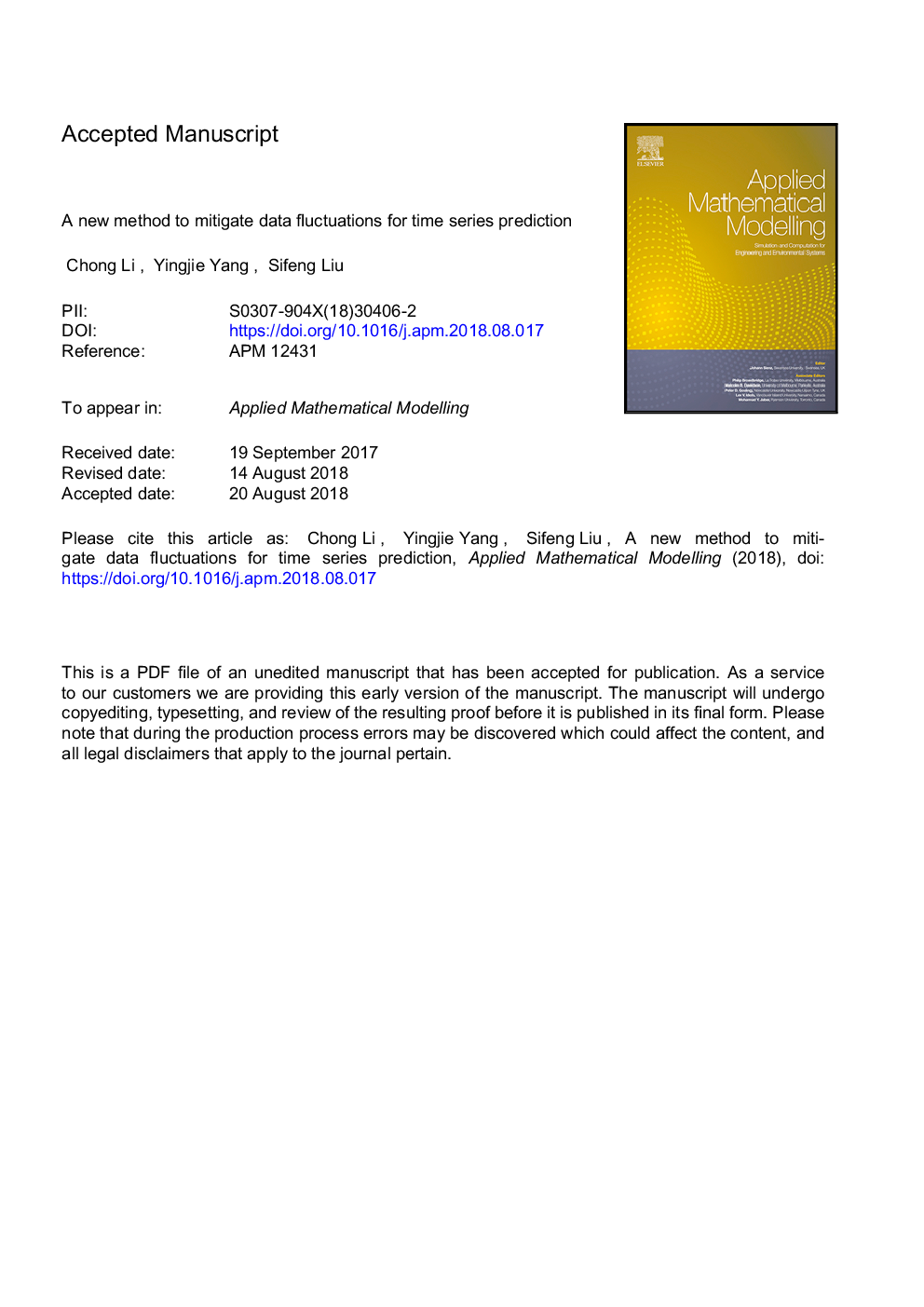| Article ID | Journal | Published Year | Pages | File Type |
|---|---|---|---|---|
| 10136148 | Applied Mathematical Modelling | 2019 | 31 Pages |
Abstract
Although the classic exponential-smoothing models and grey prediction models have been widely used in time series forecasting, this paper shows that they are susceptible to fluctuations in samples. A new fractional bidirectional weakening buffer operator for time series prediction is proposed in this paper. This new operator can effectively reduce the negative impact of unavoidable sample fluctuations. It overcomes limitations of existing weakening buffer operators, and permits better control of fluctuations from the entire sample period. Due to its good performance in improving stability of the series smoothness, the new operator can better capture the real developing trend in raw data and improve forecast accuracy. The paper then proposes a novel methodology that combines the new bidirectional weakening buffer operator and the classic grey prediction model. Through a number of case studies, this method is compared with several classic models, such as the exponential smoothing model and the autoregressive integrated moving average model, etc. Values of three error measures show that the new method outperforms other methods, especially when there are data fluctuations near the forecasting horizon. The relative advantages of the new method on small sample predictions are further investigated. Results demonstrate that model based on the proposed fractional bidirectional weakening buffer operator has higher forecasting accuracy.
Related Topics
Physical Sciences and Engineering
Engineering
Computational Mechanics
Authors
Li Chong, Yang Yingjie, Liu Sifeng,
